Are you ready to dive into the fiery depths of Montana’s captivating history?
In the vast expanse of Montana’s National Forests, including the iconic Yellowstone and Glacier National Parks, some of the largest fire seasons in history have cast their burning glow upon the landscape.
But what ignited these ferocious infernos?
From lightning strikes that crackled through the skies to the untamed flames of human-caused accidents, the history of fires in Montana unveils a tapestry woven with both natural fires and man-caused fire.
Imagine the whiff of smoke filling the air, the crackling sound of trees engulfed in flames, and the adrenaline coursing through the veins of courageous firefighters.
Montana finds itself no stranger to the wrath of nature’s fiery embrace.
Whether you’re an adventurer seeking wild tales or a history enthusiast delving into Montana’s past, this journey is for you.
- Related article: The Founding of Montana
Join me as we delve deeper into the pages of history, unfolding tales of record-setting fire seasons, catastrophic blazes, and the brave souls who risked their lives to protect the land they held dear.
Montana’s Fire History Overview

Fires have existed in Montana for as long as there have been trees, and their significance cannot be understated.
Montana’s fire history is a tapestry woven with different types of fires.
Lightning strikes, nature’s fiery arrows, primarily ignited most forest fires, shaping the land of Montana in their wake. This natural phenomenon has played a vital role in sculpting the stunning vistas we see today.
However, humans have also played a significant part in shaping Montana’s fire history.
Native Americans, for instance, used fire as a tool for land clearing and defense, recognizing its transformative power.
Other human-caused fires, particularly those starting at lower elevations, have presented a major concern.
Railroad operations further contributed to the increase in fire incidents, amplifying the magnitude of these blazes.
It’s no surprise that wildfires in the mountains and foothills of the northern Rockies are a regular summer occurrence, leaving their mark on Montana land for years to come.
Montana’s fire history has not been without its consequences.
According to the National Fire Incident Reporting System (NFIRS), in the year 2021, there were an average of 4.1 deaths and 5.3 injuries per 1,000 fires in Montana.
These statistics highlight the impact of these fires on the state’s population.
Climatic conditions also play a significant role in the severity of historic fires each year.
As Montana experiences changes in weather patterns and fuel availability, the intensity and frequency of fires can vary greatly.
Fortunately, with advances in tactics and technology, fire management in Montana has improved over the years.
Increased funding and support for fire control programs, the addition of more personnel, better equipment, and improved communication have all played a part in combating these historical wildfires.
Montana’s fire history is a mesmerizing tale, filled with the interplay of nature and humanity. These fires have shaped the land, impacted communities, and sparked a quest for better fire management.
Notable Fire Events Across Montana’s Timeline
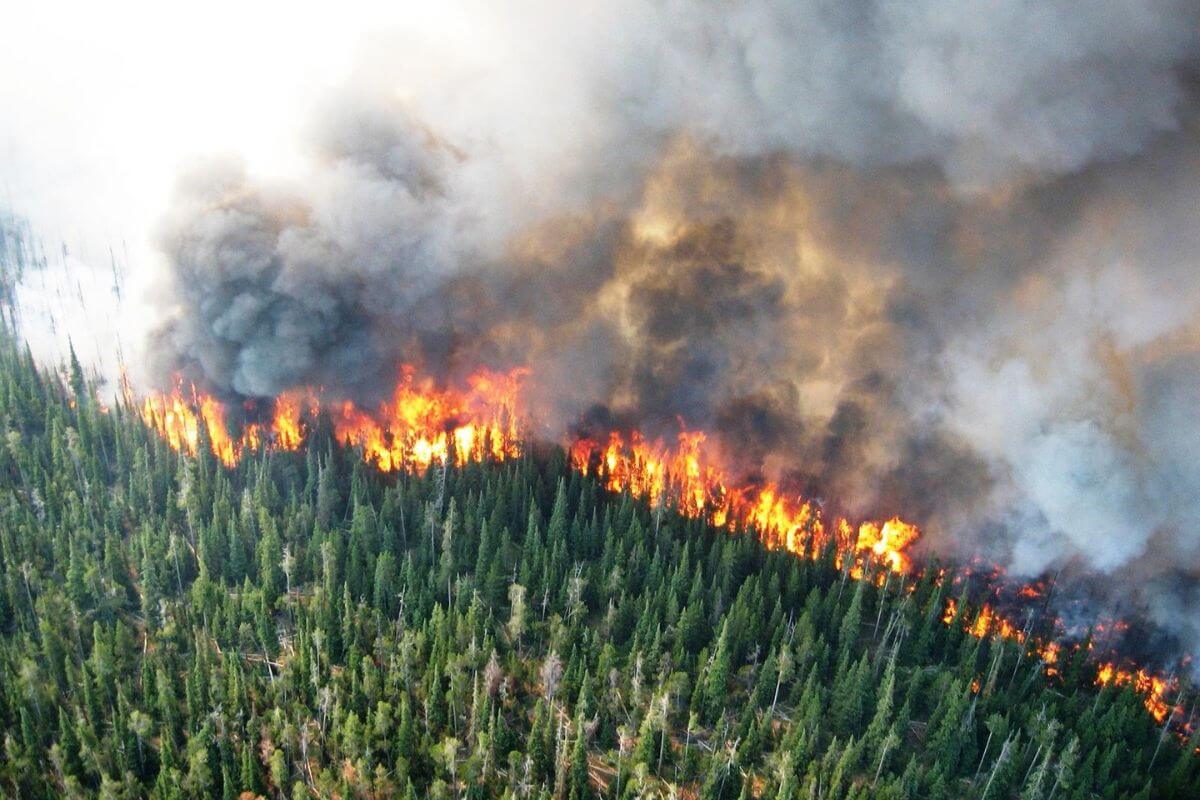
Throughout Montana’s rich history, there have been several notable fire events that have left their mark on the landscape and shaped the state’s fire history.
From the early settlements to the present day, these fires have varied in size, cause, and impact.
The 1889 Montana Fires
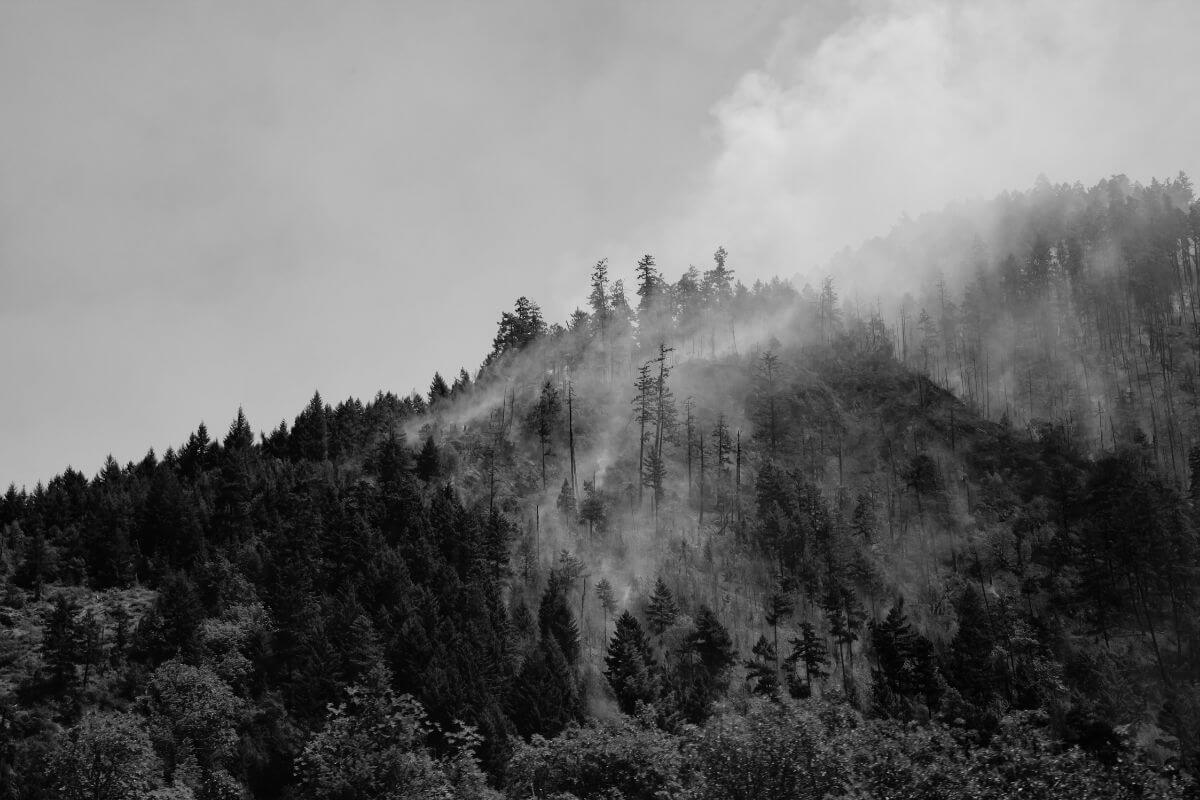
Back in 1889, Montana witnessed an inferno that tore through the Spotted Bear Ranger Station and its surrounding areas.
This 1889 fiery rampage consumed a staggering 88,020 acres, painting the landscape in hues of destruction.
However, it’s important to note that much of this area was still untouched by human settlement, mitigating the dramatic impact that could have been felt.
The sparse settlement at that time spared the area from witnessing the full extent of devastation that such a fire could bring.
The Great Fire of 1910
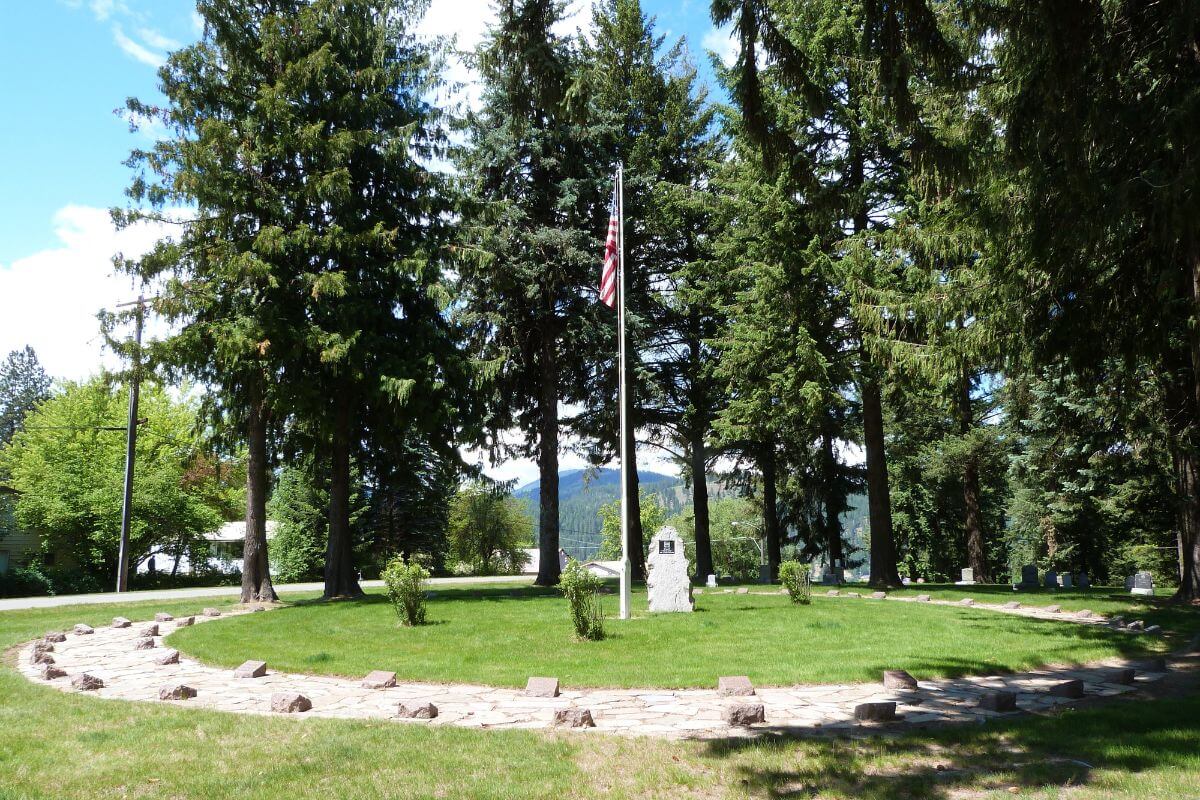
The Great Fire of 1910 stands tall in the chronicles of wildfire history. Its ferocity and size make it one of the deadliest and largest wildfires ever recorded.
How did such a catastrophic event unfold?
Unusually dry conditions primed the region for disaster, but it was man-made fires and wayward sparks from passing trains that sparked the outbreak.
Then, on that fateful day of August 20, a mighty wind stirred the flames into a raging inferno. The fires merged and spread with frightening speed, creating vast fire fronts that devoured everything in their path.
It was estimated that over 3 million acres of Montana land across multiple regions fell victim to this monumental blaze.
Lives were tragically lost, with a staggering death toll reaching 87.
The hurricane-force winds that accompanied the fire added to the destruction, leveling structures and reducing forests to charred remnants.
The loss of timber was extensive, leaving scars on the landscape that would be felt for generations.
The Great Fire of 1910 serves as a reminder of the destructive power and relentless force of wildfires.
It stands as a testament to the challenges faced by Montana and other regions prone to such intense and deadly fires.
The 1926 Fires
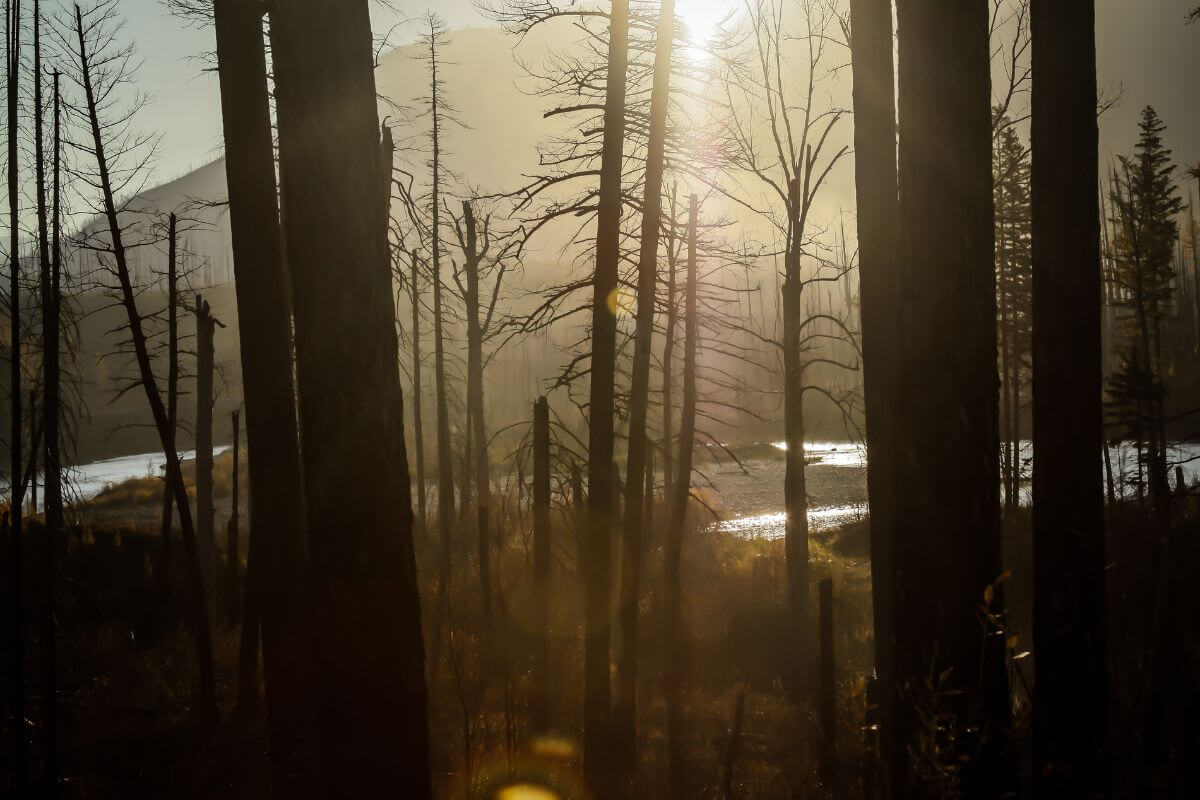
In 1926, the forests of Montana faced a fierce battle with flames. The North Fork, Big Prairie, and Tally Lake Districts all suffered from large fires, leaving behind a trail of destruction.
But the magnitude of these fires paled in comparison to the monstrosity known as the Lost Johnny fire.
This Montana man-made inferno began at Lost Johnny Creek, a tranquil waterway west of the present Hungry Horse reservoir.
From there, it raged onward, consuming everything in its path, until it reached the Middle Fork of the Flathead River above Nyack.
The sheer size and intensity of this fire were enough to astonish even the most seasoned firefighters.
The 1926 fires served as a stark reminder of the ever-present danger that lurks within the forests of Montana.
Half Moon Fire of 1929
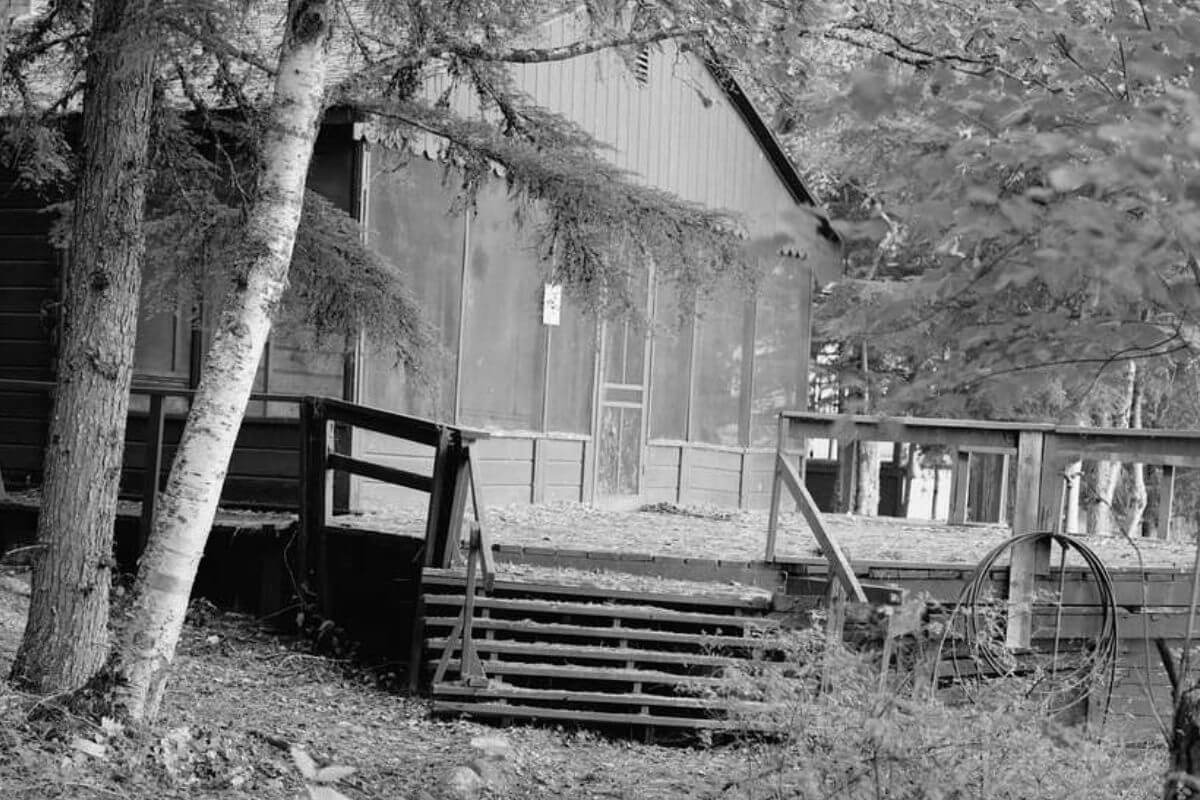
The Half Moon Fire of 1929 started north of Columbia Falls, a small town nestled in the heart of Montana, and quickly spread, devouring everything in its path.
This fire was no ordinary blaze; it was a merciless force of destruction that consumed an estimated 100,000 acres of National Forest, private lands, and even parts of Glacier National Park.
The spark that ignited this fiery monster came from a seemingly innocent act – private debris burning.
It serves as a stark reminder of the devastating consequences that can arise from our own actions, even those done with good intentions. Little did the individuals know the extent to which their simple act would lead to extensive and grueling firefighting efforts.
The Half Moon Fire of 1929 stands as a testament to the challenging battle against forest fires that Montanans face.
The Mann Gulch Fire in 1949

Lightning crackled through the sky, igniting multiple destructive fires in Helena National Forest.
One of those fires found its fiery home near a ridge, nestled between the picturesque Meriwether and Mann Gulches.
Little did anyone know that this spark would set the stage for a tragedy that would forever be etched in the history books.
The year was 1949, and the Mann Gulch Fire would become a haunting reminder of the dangers faced by firefighters.
It was a battle against the relentless flames, a battle that unfortunately claimed the lives of 12 brave smokejumpers and a district guard.
The Mann Gulch Fire serves as a tragic and harrowing example of the risks and sacrifices that firefighters face in their mission to protect and preserve our precious landscapes.
Sleeping Child Fire in 1961
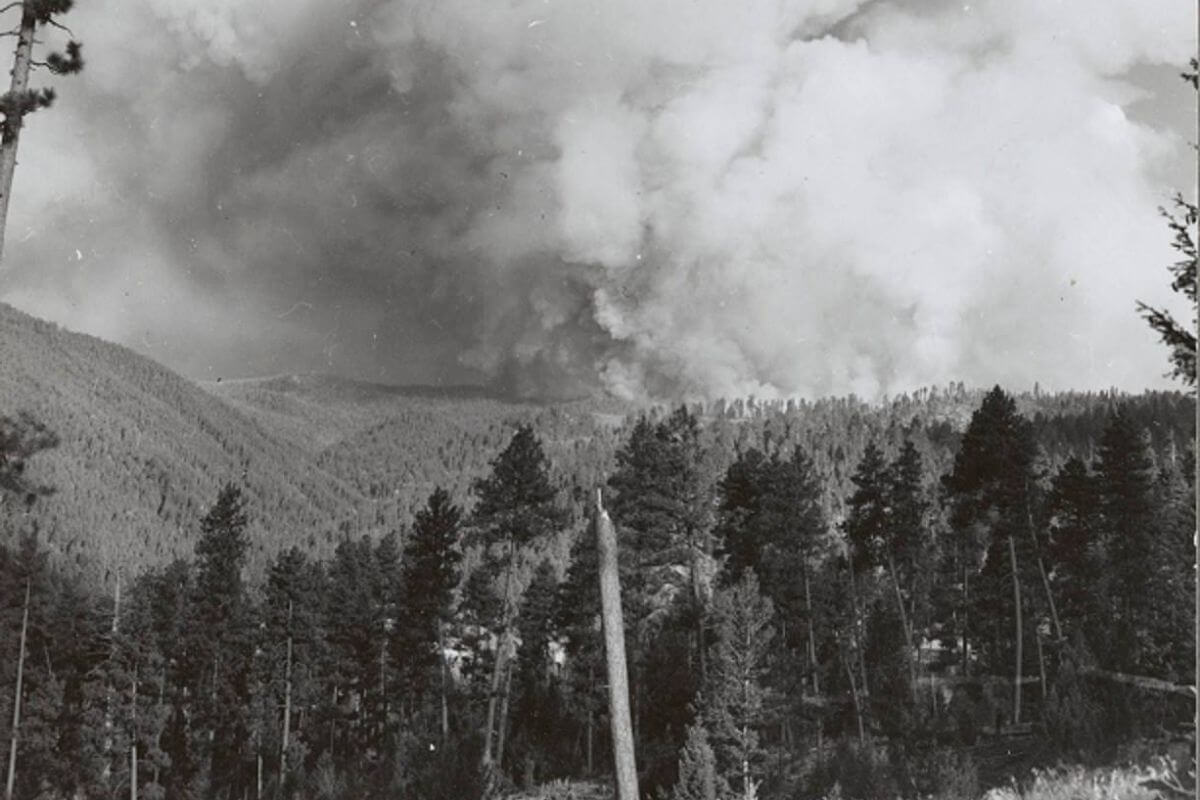
In 1961, something remarkable happened in the heart of Montana’s Bitterroot Forest.
The Sleeping Child fire, triggered by the power of nature through lightning itself, started around 4 p.m. in an area filled with lodgepole pine windfalls.
These fallen trees had piled up, creating a formidable obstacle standing 10 to 15 feet high. But that wasn’t all – thick reproduction had taken root, growing up between the logs.
This incendiary event took place near the summit of a rather flat, round-topped ridge.
The burning conditions were intense, to say the least. The elements aligned perfectly for this fire’s existence and growth.
The Sleeping Child Fire serves as a reminder that even the most serene landscapes can transform into a hellish inferno when conditions align.
The Yellowstone Fires of 1988
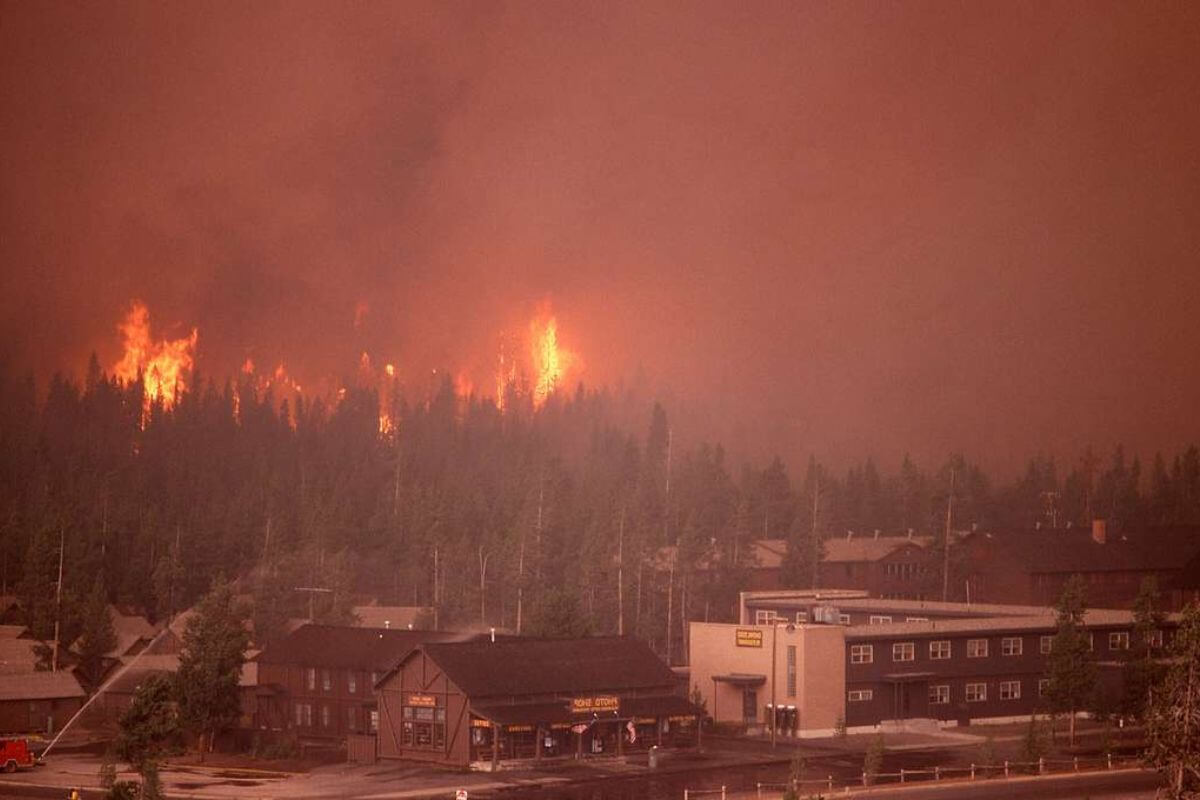
The Yellowstone Fires of 1988 were a cataclysmic event that forever changed the way we perceive fire’s role in ecosystems.
The repercussions of these fires, both in terms of environmental impact and public understanding, were monumental.
The cost to fight the Yellowstone fires reached an astounding $120 million.
It was a relentless battle, fought with all our resources, and it wasn’t until rain and snow arrived in September that the advance of the fires could finally be halted.
Mother Nature had to intervene to bring this inferno under control.
What made these fires even more devastating was the unexpectedly dry conditions in July. Within just one week, fire acreage doubled, which triggered urgent suppression efforts. It was a race against time, and unfortunately, we fell short.
Approximately 793,880 acres of Yellowstone National Park, or roughly 36% of its pristine landscape, succumbed to the wrath of the Yellowstone fires.
It was a staggering loss, and it wasn’t just the park itself that was affected. Five fires from adjacent public lands, including the monstrous North Fork Fire, burned their way into Yellowstone.
The Yellowstone Fires of 1988 were not just a tragedy. They were a wake-up call, reminding us of the immense power and unpredictability of nature.
The 2017 Montana Fire Season
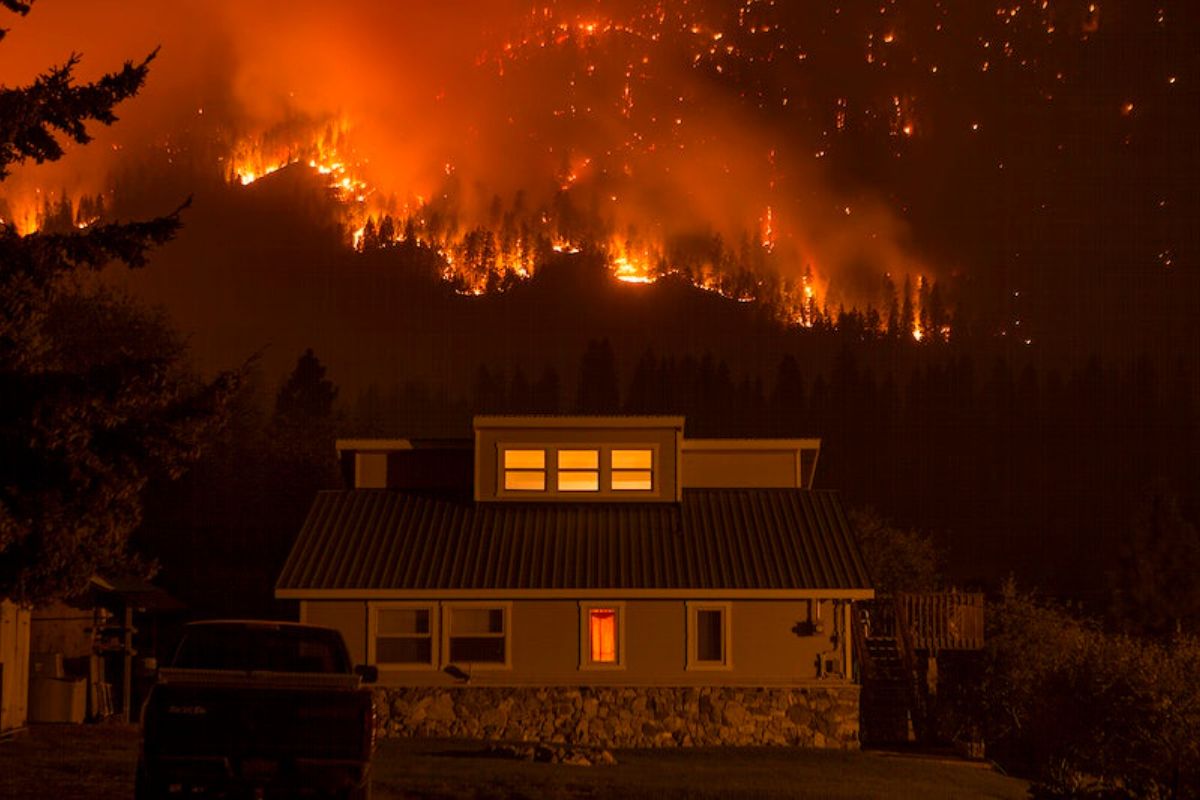
Montana, like many western states, endured a brutal fire season in the summer of 2017. It was a time of devastation and destruction as flames devoured everything in their path.
According to the Northern Rockies Coordination Center (NRCC), a staggering 1,276,456 acres of Montana lands were consumed by fires.
The scale of these fires was mind-boggling. It seemed as if the very essence of Montana was being consumed by this relentless inferno.
The lush green forests, the majestic mountains, and the pristine landscapes turned into charred remnants of their former glory. It was a heartbreaking sight to witness, as the fires raged on and on with seemingly no end in sight.
These significant fire events in Montana, such as 1889 and 1910, prompted reorganization within the Forest Service, leading to the development of wildland fire protection plans.
After the 1910 fire, efforts to combat wildfires improved, resulting in a decline in the acreage burned in subsequent years.
From lightning fires to man-made sparks and dry conditions, these fires have left an indelible mark on the state’s landscape.
Community Resilience and Fire Preparedness
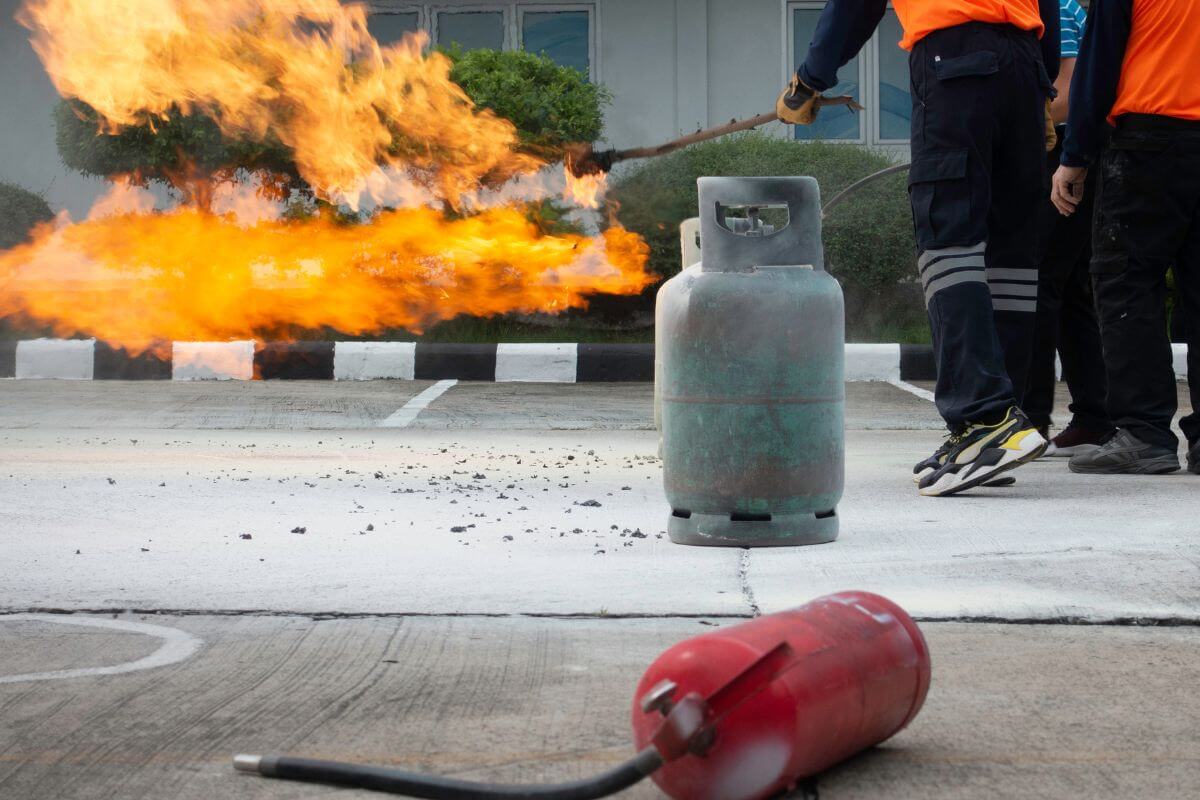
Community resilience and fire preparedness are crucial for minimizing the risk of wildfires in Montana.
By taking proactive measures and implementing effective strategies, individuals and communities can significantly reduce the potential for injuries, fatalities, and property loss.
| Aspect | Strategies |
|---|---|
| Safety and Protection | Create defensible spaces around homes, clear debris and flammable materials, and build structures with fire-resistant materials |
| Environmental Conservation | Implement sustainable land management practices, reduce fuel loads, and create fire-adapted landscapes |
| Resource Management | Engage in controlled burns and forest thinning, allocate firefighting resources effectively, and ensure timely response to wildfires |
| Early Detection and Reporting | Encourage vigilant community members and promptly report signs of fire or smoke |
| Communication and Alerts | Establish reliable communication channels, disseminate fire-related information, alerts, and evacuation notices |
By implementing these steps, communities in Montana can enhance their resilience to wildfires, minimize the risk of fire-related disasters, and contribute to the overall safety and well-being of their region.
Montana’s Fire History Final Thoughts
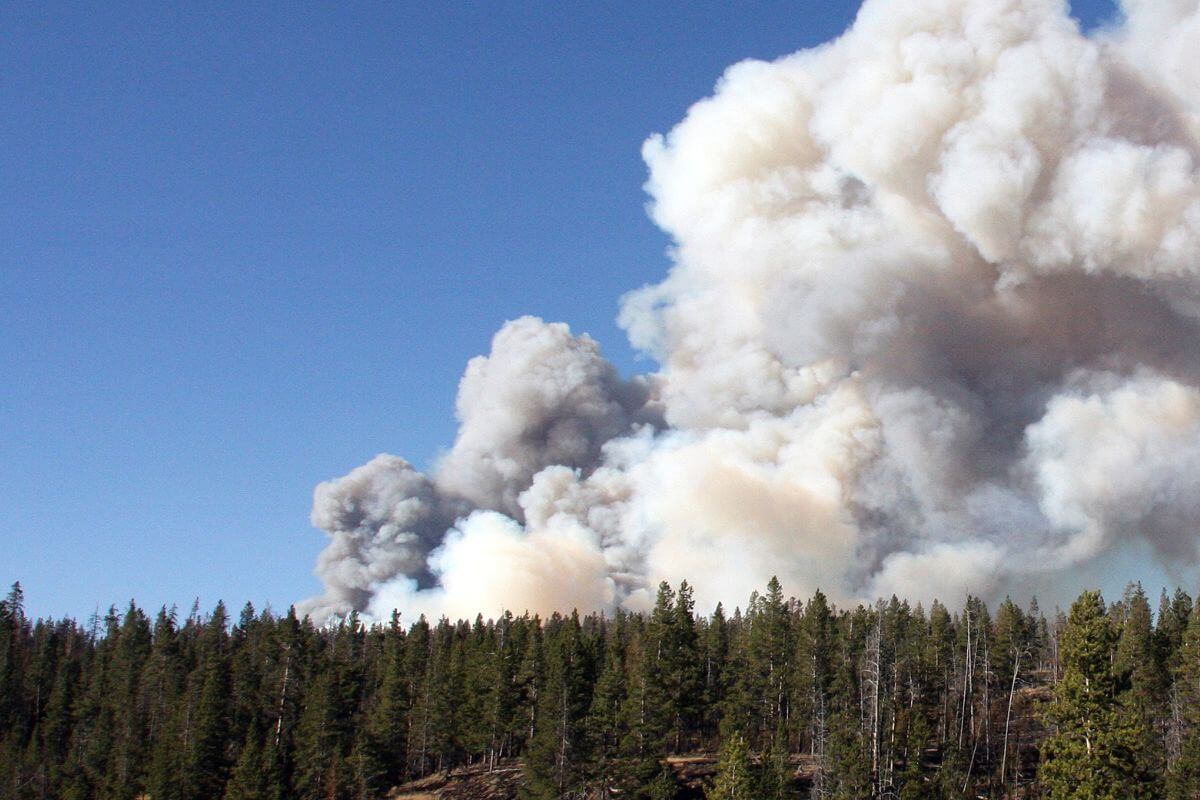
One thing becomes crystal clear: Montana has had its fair share of intense and destructive wildfires.
From the infamous Great Fire of 1910 to the record-setting 2017 fire season, Montana has faced numerous challenges in dealing with these natural disasters.
The vast expanse of national forests, including Yellowstone and Glacier National Park, has been particularly vulnerable to fire outbreaks.
The rugged terrain and the abundance of fuel for wildfires have only exacerbated the situation.
Additionally, human-caused fires, whether intentional or accidental, have been a significant factor in the frequency and intensity of these blazes.
Over the years, there have been notable fires, such as the Mann Gulch fire and the Yellowstone fires, that have left lasting scars on Montana’s landscape.
The efforts of the brave men and women in the fire department, as well as the use of resources like chemical fire retardants, have been crucial in mitigating the impact of these catastrophic wildfires.
As Montana continues to grapple with the threat of summer wildfires, the need for fire preparedness and the importance of public awareness cannot be overstated.
Montana’s fire history serves as a stark reminder that we must remain vigilant and proactive in protecting our cherished national forests and the communities that call this beautiful state home.
Similar to Big Sky Country’s record of great wildfires, severe snow conditions in Montana are still expected as it has also a long history of brutal winters. So, remember to always prepare when visiting the state.
Montana’s Fire History FAQs
1. What Caused the Great Fire of 1910?
The Great Fire of 1910 in the Northern Rockies resulted from a mix of factors.
The region’s extreme dryness, lightning strikes, human activities like railways and logging, and even arson contributed to the disaster.
Strong winds on August 20 amplified the fires, causing their swift spread and resulting in 85 lives lost, including 78 firefighters, across multiple areas.
2. What Was the Biggest Fire in Montana History?
The biggest fire in Montana history was the Great Fire of 1910.
It ravaged over 3 million acres of land, spreading across Montana, Idaho, Washington, and even southeast British Columbia.
This devastating fire claimed an immense amount of timber, enough to fill a freight train stretching an astonishing 2,400 miles long.
3. Which U.S. State Has the Most Forest Fires?
There is one US state that stands out when it comes to forest fires: Alaska.
In 2022, Alaska experienced the largest area burned by wildfires across the country. With a staggering 595 individual wildfires, the state was devastated by over 3.1 million acres of scorched land.
This accounted for approximately 41 percent of all acres burned due to wildland fires in the United States that year.
4. How Did the Yellowstone Wildfire Start?
The 1988 Yellowstone Wildfire, one of the park’s worst, stemmed mainly from lightning strikes, with 9 out of 42 fires attributed to human actions.
Favorable thunderstorm conditions ignited the fires, while dryness and accumulated fuel escalated their severity.
Lightning, dry conditions, and fuel accumulation combined to spark and escalate the devastation of the 1988 Yellowstone Wildfire.
5. Why Does Montana Have So Many Fires?
Montana experiences recurrent wildfires due to its arid climate, frequent lightning, dense vegetation, and a blend of natural and human triggers.
Wind amplifies the spread, while the wildland-urban interface heightens risk. Climate change extends rough fire seasons, and limited resources demand ongoing collaboration and management.
Explore Montana further by giving these other articles a read:
- Montana’s Underwater Era
- Gold Rush History in Montana
- Montana’s Latest Presidential Trip
- Montana’s Seismic Activity
- https://www.fs.usda.gov/Internet/FSE_DOCUMENTS/stelprdb5444731.pdf
- https://www.usfa.fema.gov/statistics/states/montana.html
- https://www.nifc.gov/fire-information/nfn
- https://www.flickr.com/photos/usdagov/9421030181
- https://www.flickr.com/photos/usdagov/9421043075
- https://www.flickr.com/photos/fsnorthernregion/9394850821
- https://commons.wikimedia.org/wiki/File:St_Maries_1910_Fire_Memorial
- https://www.flickr.com/photos/lukedetwiler/10504216413
- https://picryl.com/media/glacier-park-villas-edna-sears-graham-cabin-south-of-lake-mcdonald-lodge-on
- https://www.flickr.com/photos/kimtashjian/48277288581
- https://www.facebook.com/DiscoverBitterrootNF/photos/a.219140744893703/856097394531365/https://picryl.com/media/fire-near-old-faithful-complex-2-dea078
- https://www.rawpixel.com/image/3388314/free-photo-image-car-tree-fire-forest

